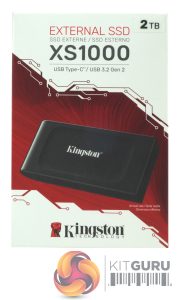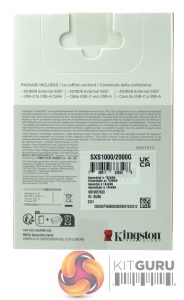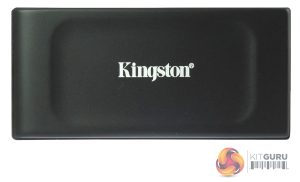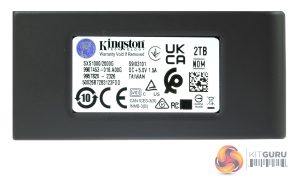Kingston's XS1000 comes in a box that is a number of times bigger than the drive itself. To give you an idea of how small the drive is, the image on the front is its actual size. At the top right-hand side of the box is a sticker with the capacity of the drive on it, and between this and the image of the drive is a line of text stating that it uses a USB-C / USB 3.2 Gen 2 interface.
The rear of the box has the box contents listed at the top, in this case just a USB-C to USB-A cable. Under this are some multi-lingual marketing and warranty notes.
The XS1000 is constructed from aluminium and hard plastic, measures just 69.54 x 32.58 x 13.5mm and weighs in at 30g. Internally the drive uses a Silicon Motion SM2320 controller and 3D TLC NAND. Silicon Motion's SM2320 is a single-core, four-channel solution that has a built-in USB 3.2 Gen 2 x 2 (20Gb/s) interface, although in the XS1000 it's only running at 3.2 Gen 2 x1 (10Gb/s) speeds.
The controller supports up to 4TB of 3D TLC/QLC NAND at speeds of up to 2,100MB/s and 2,000MB/s for reads and writes respectively when in USB 3.2 Gen 2 x 2 mode. The SM2320 also supports AES 256-bit encryption, TCG Opal 2.0 compliance and auxiliary Fingerprint Security support but Kingston hasn't taken advantage of any of these security features with the XS1000. With its built-in USB 3.2 Gen 2 x2 interface, the controller allows for smaller format drives like the XS1000 to be built as there isn't a separate bridge chip taking up space on the PCB.
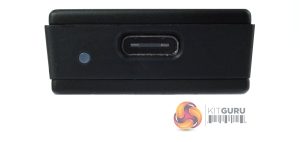
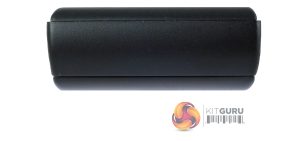
The XS1000 uses a USB 3.2 Gen 2 x1 USB-C port, next to which is a blue LED drive activity light.
 KitGuru KitGuru.net – Tech News | Hardware News | Hardware Reviews | IOS | Mobile | Gaming | Graphics Cards
KitGuru KitGuru.net – Tech News | Hardware News | Hardware Reviews | IOS | Mobile | Gaming | Graphics Cards


